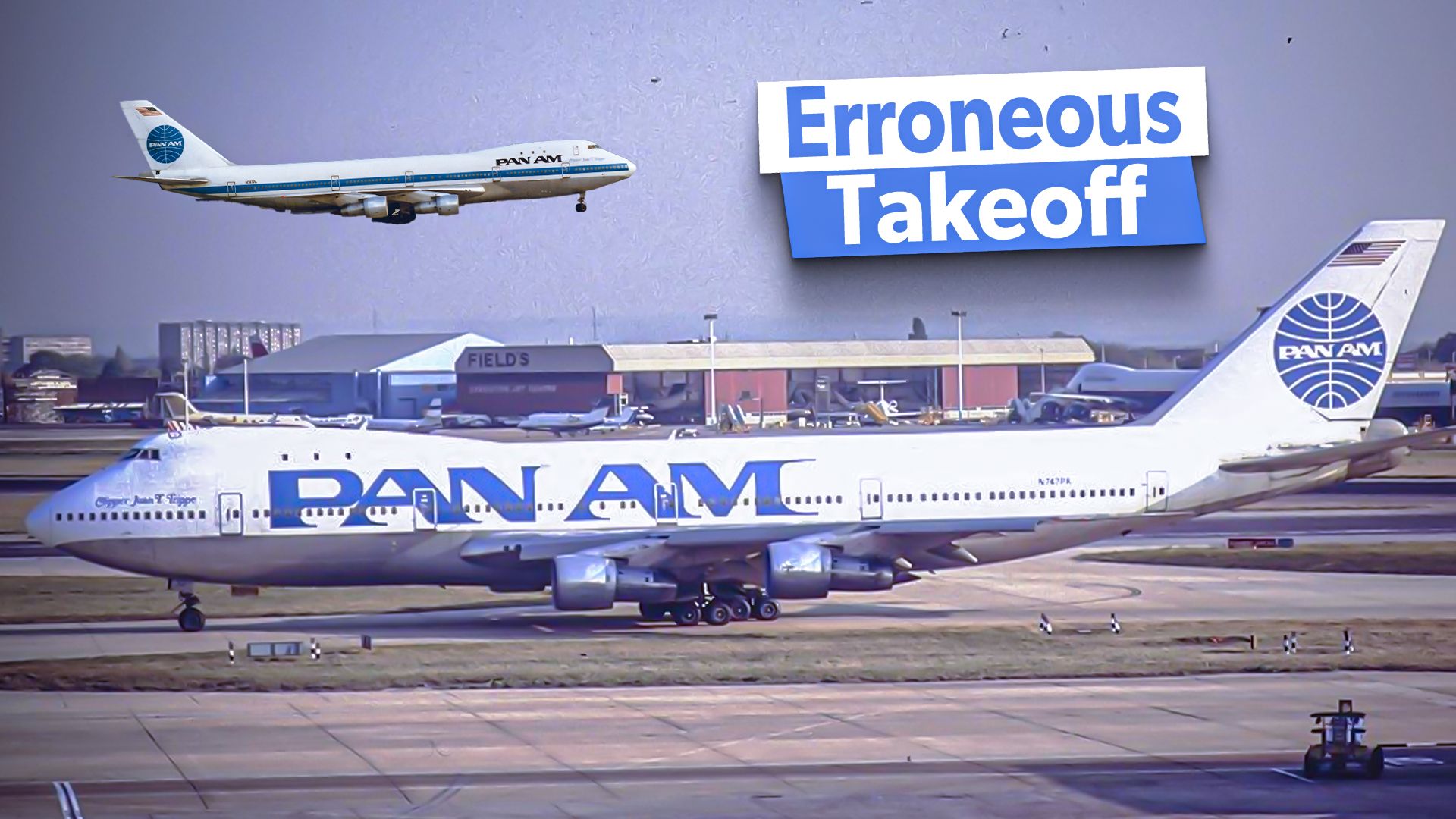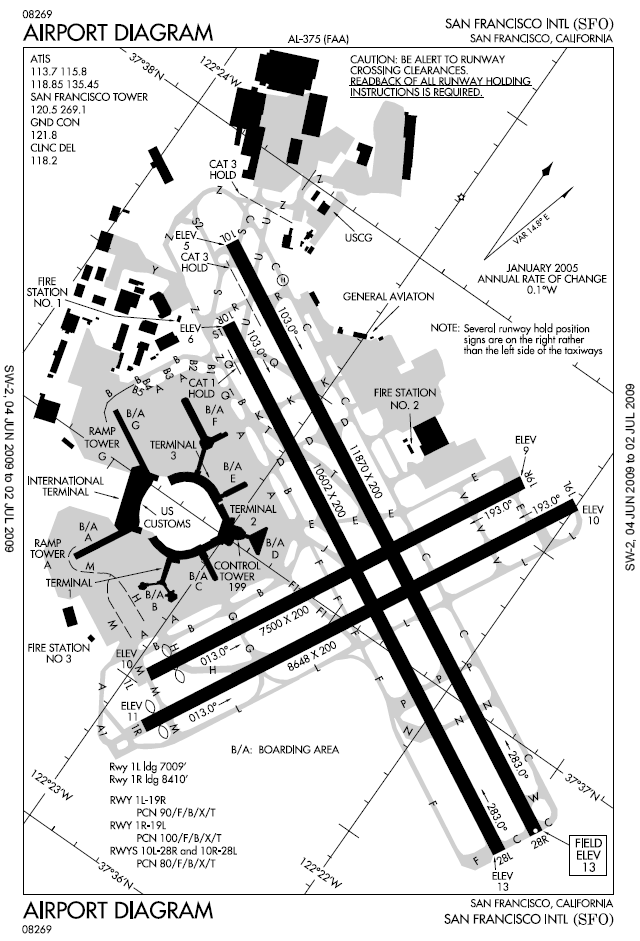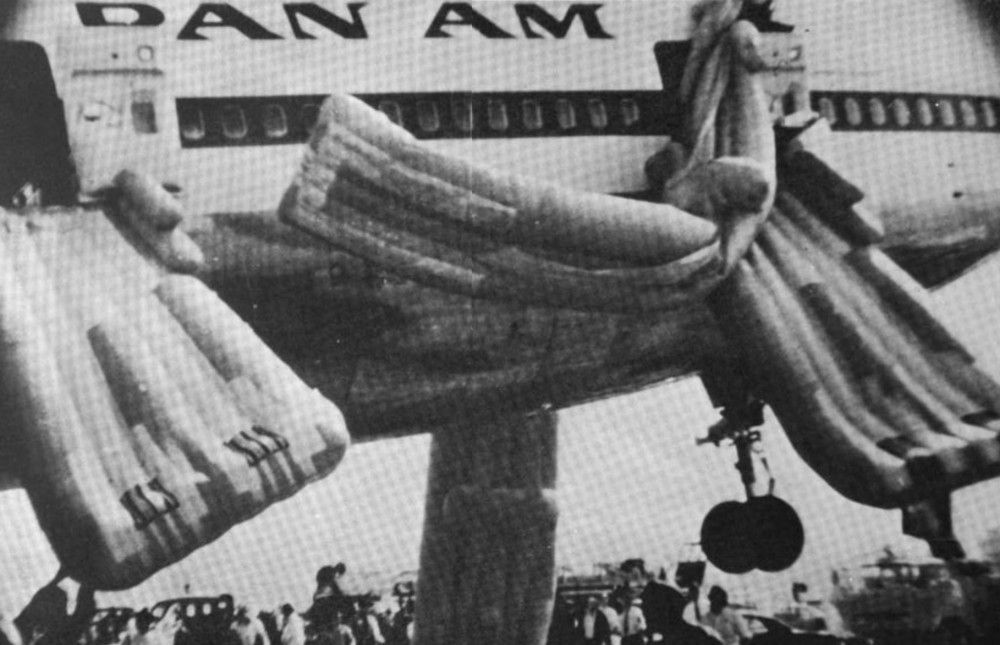It was July 30, 1971. Pan Am flight 845 had just landed at 14:30 from Los Angeles at San Francisco International Airport. There would be a short time on the ground before they flew on to Haneda International Airport, Tokyo, Japan. The Boeing 747-121 had 199 passengers onboard and 19 crew members. It was to be a very surprising day for all onboard
The crew
The very experienced captain was Calvin Dyer, the first officer was Paul Oakes and the flight engineer was Winfree Horne. There were two relief crew on the flight due to its length. They were Second Officer Wayne Sagar and flight engineer Roderic Proctor.
There were 14 cabin crew onboard that day, as well as 11 positioning cabin crew. One of the crew was Jane Thoe. She’d been flying with Pan Am for almost ten years and had traveled all over the world.
In the cockpit
The flight crew had planned to use runway 28L for take-off and had already pushed back from the stand at 15:01. They then found out that the runway was closed for maintenance, as was the first 1,000 feet of 01R which they were going to use instead.
The captain had his concerns about this and spoke to the flight dispatcher team at Pan Am and the control tower. He was told that 01R was 8,500 feet long from the point of take-off to the end.
Misunderstandings were abound and the flight crew were mistakenly told that the available take-off length was 9,500 feet. As they prepared for take-off, they selected flaps 20 instead of the original flaps 10 but did not recalculate the take-off reference speeds for the new flaps setting.
The critical speeds were too late and the take-off roll was long. The first officer called “Rotate!” early because the end of the runway was “…coming up at a very rapid speed.”
What happened next?
The aircraft could not achieve a sufficient altitude to clear obstructions and hit the Approach Lighting System at 15:29 local time. The fuselage was damaged at the rear and the right landing gear was forced into the fuselage.
The left landing gear dangled underneath the aircraft, partially ripped off. The impact damaged the number one, three and four systems and three evacuation slide packs. Ceiling panels fell down, some overhead lockers opened and some oxygen masks fell.
Three lengths of angle iron 17 feet long had penetrated the cabin, almost severing the leg of a passenger in 47G. The passenger in 48G was also severely injured and his left arm was cut and crushed.
Two of the cabin crew (one an ex-nurse) rushed over to help as the two passengers were profusely bleeding. They tried to stabilize them and stop the bleeding the best they could with limited equipment.
A six-year-old boy nearby had just seen a piece of iron, pass his chest but was not injured. The angle irons also hit two other areas of seats, which were, luckily that day, unoccupied.
The inflight director made an announcement for any doctors onboard and then went into the cockpit, informing them of damage in the cabin and the two injured passengers. The second officer and relief engineer went to the back of the cabin to assess things.
Returning to SFO
The flight engineer shut down the damaged hydraulic systems and the captain tried to assess what flight controls were left. They would return to the airport and make an emergency landing.
This would mean dumping fuel until the 747 was safe to land. Two US Coast Guard aircraft assessed the outside damage.
The cabin crew moved passengers seated in the rear of the aircraft forward, away from the damage. You could see the Pacific Ocean through the cabin floor. Two doctors helped the injured. Two of the cabin crew had blood on their white shirts. The cabin crew ex-nurse stayed with the injured.
Planned emergency landing
The captain told the cabin crew to prepare for an emergency landing on land and water. They briefed the passengers and started to prepare. They made sure that lifejackets were donned and shoes and sharp objects were removed from passengers.
Pillows and blankets were handed out to soften the impact. The cabin crew gave instructions on the brace position and assessed the exits. Nine male cabin crew who were positioning were assigned to help at exits. Two more positioning crew went to help at the rear of the aircraft.
Surprisingly, it was calm and quiet in the cabin, some people read, some said prayers. The cabin crew walked through the cabin checking that everything was secure and stowed away and took questions from passengers.
“There really wasn’t time to be scared. We were just too busy.”
Jane, cabin crew flight 845
The miracle landing
It had been a long one hour and forty-two minutes for the passengers and crew. The landing was only partially controlled as they had lost hydraulics and had no brakes. The 747 bounced twice and six tires failed, starting a fire under the aircraft, before veering right of the runway.
Dirt on the ground put out the fire. The captain had made a heroic landing in the circumstances. The passengers applauded, the cabin crew were just happy to be back on the ground. First responders were waiting to assist.
The evacuation
By mistake, the first officer ordered the evacuation on the radio instead of the address system and the cabin crew were told to wait until they heard it.
It was 30 seconds after landing when the second officer and relief engineer went down to the main deck to help evacuate. They had not realized that the command had not been heard, so shouted for everyone to evacuate.
The crew at the back of the aircraft could not hear the command but were watching the cabin crew stationed forward of them. Therefore, the doors were all opened in sequence, within 40 seconds.
Four of the slides were not useable due to impact damage and high winds. Most people evacuated via the six rear slides. Eight passengers evacuated via the front slides but suffered serious back injuries as the slides did not reach the ground.
Meanwhile, one minute and ten seconds after coming to a stop, the damaged aircraft started to tilt backwards so that the nose was elevated and the tail was on its back. The weight of the damaged aircraft (and loss of landing gears) and the movement of passengers to the rear had tipped the aircraft over. Some passengers jumped from the rear door as it was close to the ground. Twenty-seven people were injured during the evacuation, mostly with cuts and sprains.
The cause and effect
The NTSB report says that the probable cause of the accident was:
“…the pilot’s use of incorrect takeoff reference speeds. This resulted from a series of irregularities involving: (1) the collection and dissemination of airport information; (2) aircraft dispatching; and (3) crew management and discipline; which collectively rendered ineffective the air carrier’s operational control system.”
The dispatcher did not check the chart for the runway, which was 1,000 feet shorter than expected. The captain of the aircraft later said that the aircraft was overloaded and the engines under performed.
The FAA ordered that evacuation alarms were fitted at every cabin crew station on 747s and the failure of four of the slides resulted in a review of the design of the slides. The aircraft was repaired and continued to fly for many years. It became a restaurant in South Korea before finally being scrapped in 2010.
Jane received a commendation letter:
“I would like to extend to you our sincere appreciation for the exemplary manner in which you conducted yourself during a critical period aboard Flight 845 on July 30, 1971. Many complimentary remarks have been received from those you helped and we are sure that each would like to extend their personal thanks to you. There were many outstanding impressions created during the course of events. Most evident was the fact that you and your fellow crew members placed your first concern on the safety of others. We are certain that you will always be warmly and respectfully remembered by all who were with you on that flight and we are very proud that you are a member of our organization.”
(The letter is now kept at the SFO Museum).




